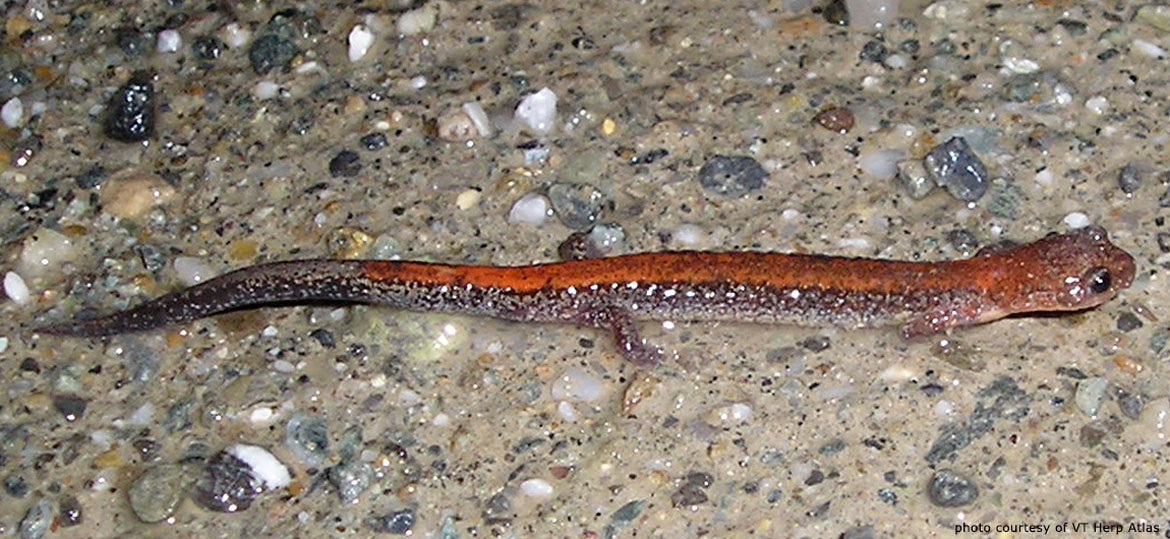
The Eastern Red-backed salamander (Plethedon cinereus) is one of the three slender and delicate salamanders in Vermont along with the Four-toed and the Northern Two-lined. It usually has a red-brown back with darker sides. Adults range from 31/2 to 5 inches in length. Their belly is a salt and pepper mix of white and gray that looks like granite. Occasionally salamanders missing the red color (lead phase) or missing the dark sides (red phase) can be found.
Habitat
The Red-backed can usually be found in damp locations under leaf litter or the coarse woody debris of mature deciduous or mixed hardwood forests. They are not normally found where the soil is saturated or acidic. Red-backs are entirely terrestrial. They over winter underground.
Reproduction
The Eastern Red-backed salamander is Vermont's only salamander, indeed its only amphibian, that does not need to return to water for some phase of its reproductive cycle. It lays its eggs on land, under moist stones or rotting logs found on the forest floor. They lay eggs in grape-like clusters of 3 to 17 out of the sun under or in moist logs.
Diet
Red-backed salamanders feed on a variety of invertebrates, including mites, spiders, insects, snails and larvae. While foraging for food, they thrust out their tongue in a quick, forward motion to capture their prey.
Management
During the past few decades, more has been learned about salamander populations and their natural histories in Vermont. A reptile and amphibian atlas project initiated in 1995 has provided more information on the distribution of Vermont's salamanders.
Biological inventory of wildlife and natural communities is helping identify important habitats and vulnerable populations of salamanders in order to include these in conservation planning efforts. A study of vernal pools is providing information on habitat characteristics that are important for salamander breeding.
Large-scale land conservation projects, such as the addition to public lands in the Nulhegan River Basin, are helping to ensure the continued existence of salamanders in Vermont's landscape. Environmental legislation also helps sustain vulnerable species of salamanders by protecting their critical habitats.
Status
The Eastern Red-backed is found statewide, and is the most abundant salamander in Vermont.
